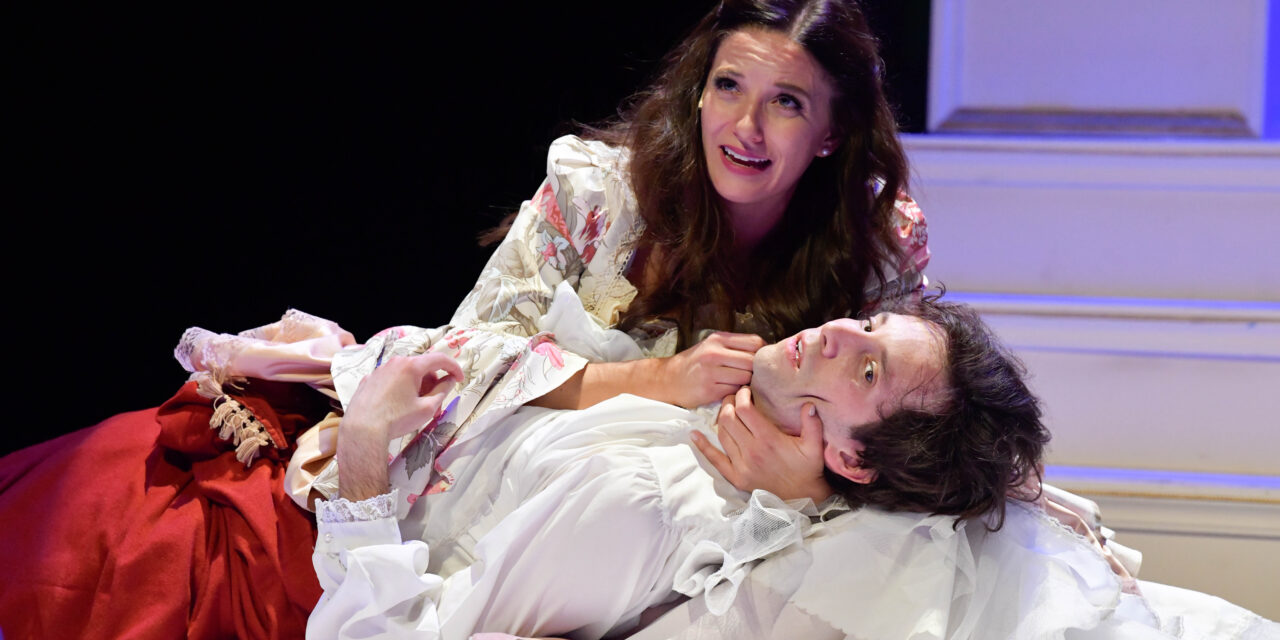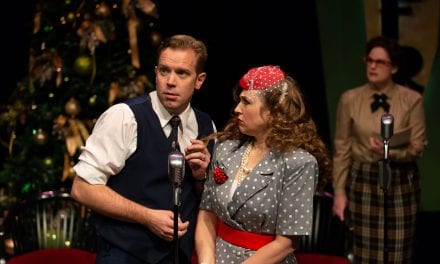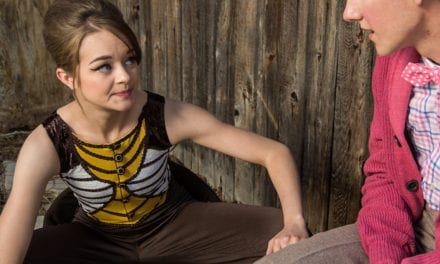LEHI — Ever wonder what it would be like to live and interact with a genius like Mozart? If so, come to Amadeus at the Regalo Theater. The company transports its audience to the eighteenth century with period music, costumes, and story.

Show closes October 16, 2023.
Producer Christopher d’Argy describes his experience seeing Amadeus as life changing, and I have felt that way as well. Regalo and d’Argy have displayed the utmost care in presenting this play, and no detail is overlooked. I even loved how the digital program they made has so much history and backstory in it, including some fact vs. fiction of Mozart’s life and what’s portrayed in this play.
Amadeus is a partially fictional play, written by Peter Shaffer, about composer Antonio Salieri’s rivalry with young Wolfgang Amadeus Mozart, how Salieri fell in love with the Mozart’s music and hated God for it. In revenge, Salieri destroys Mozart’s career so thoroughly that the poor man dies early, and the world loses one of the greatest artists of all time.
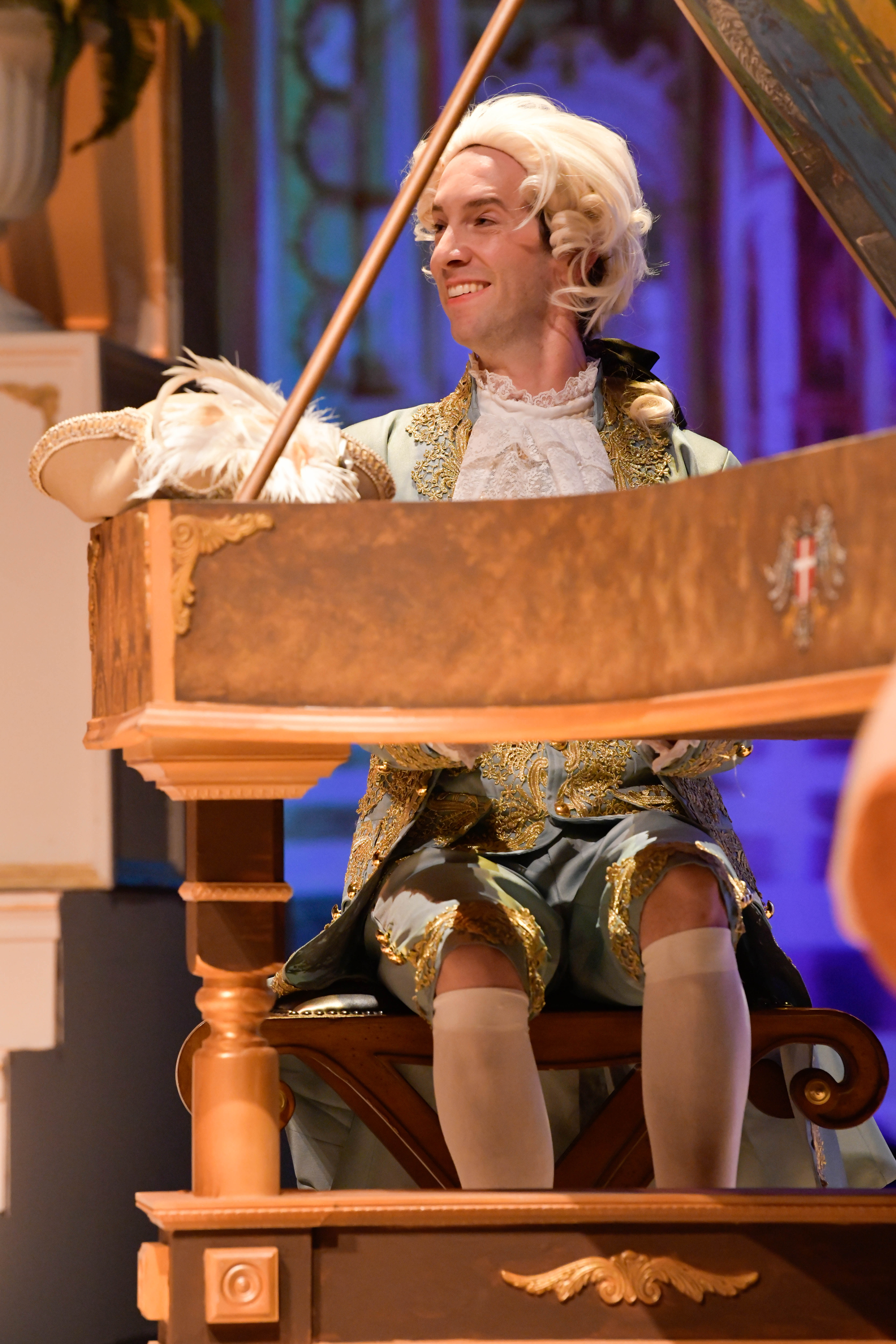
Each performer was wonderful in their role, and the show was very engaging throughout, even for the shorter attention spans of modern audiences. Director Michael Carrasco made good use of the space and timing of events, especially during the more intense scenes. I loved how the Mozart music played throughout each scene fit perfectly with the storyline. One great choice was to have the two “gossip girls” (as I called them), Venticello 1 and 2, played by females and dressed in steampunk. This modernized the show and made this Amadeus different from any other production. Carrasco also designed the set, which was very simple and minimal but seemed large and elaborate due to the screens used to project pictures and videos on. There were three screens, one on either side framed by beautiful white and gold flat arches, and a large backdrop screen. When the opera scenery or other images (such as the character of Don Giovanni) was projected onto the screens, it looked magnificent.
Liz Griffiths was the lighting designer, and she had some amazing moments during the show, including when Salieri attempts suicide, which replaced the blood with red light. This choice was much more startling and less gory than other options, and it worked superbly. Costume designer Brooke Holahan had the difficult task of dressing actors in an ornate period style; the enormous dresses and large wigs made the show look very sophisticated. I loved sitting in that environment with the beautiful music, set, lighting, and characters all dressed in the style of a long-gone era.
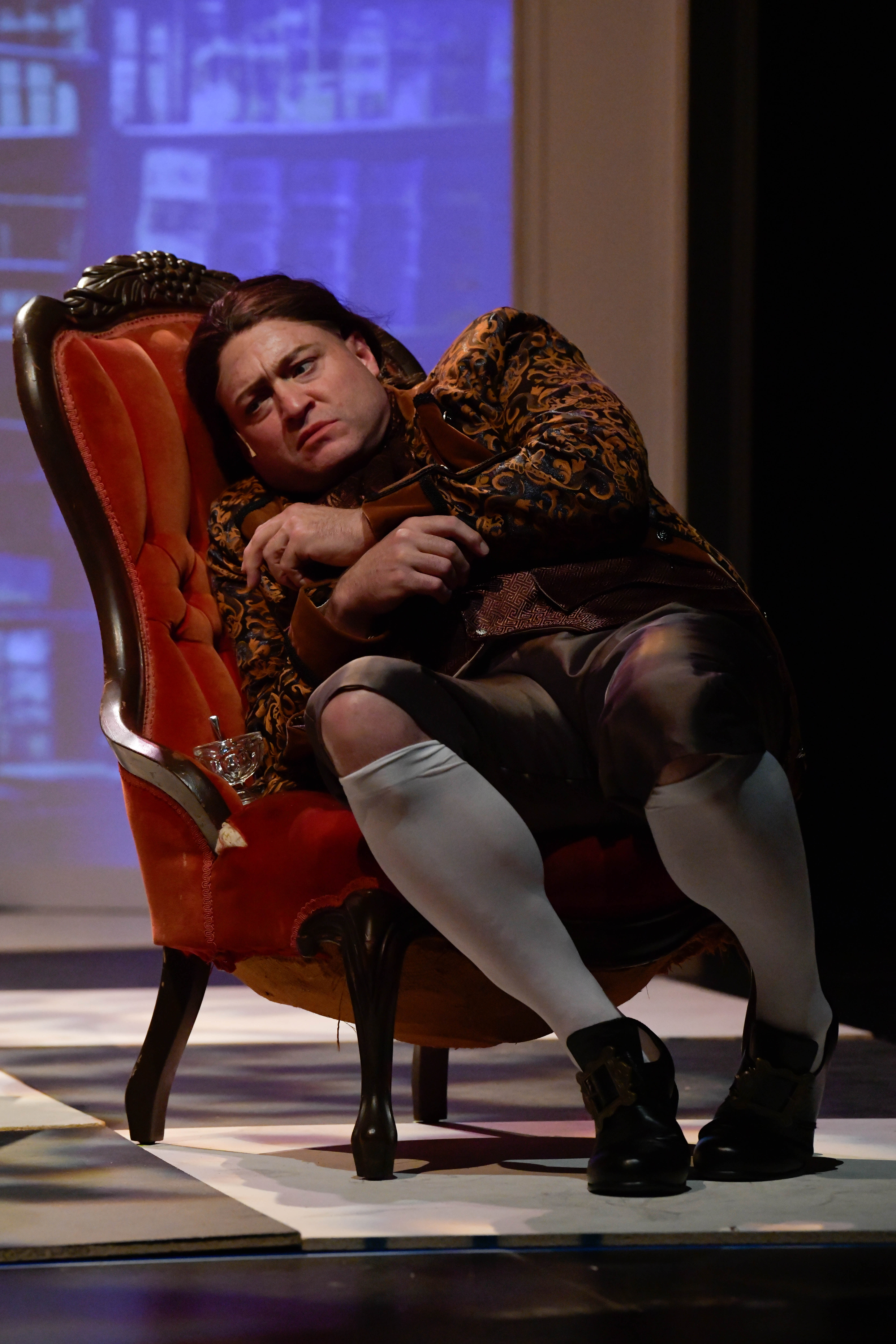
Patrick Brannelly played Salieri, who narrates the play and is the primary main character. Brannelly had the most lines and a lot of monologues, and so I was grateful with how well he was able to put emotion into his role. Although it sometimes seemed like he was focused too much on remembering the line and not enough on expressing it well, generally he was able to fully enhance his character with each line. For many scenes he had the weight of carrying the show, so for such a high workload, he did extremely well. His last scenes were very moving as he expressed his tortured feelings and pain.
Morgan Gunter played Mozart, and his performance was prodigious. He even had a look similar to how Mozart was described. The script requires a ton of over-the-top emotion from Mozart, which can make an actor seem fake if not done well, but Gunter kept his performance real and believable throughout the evening. I especially loved to see how he could switch between uproarious laughter and quiet conformity. Even when Mozart was in his last few hours of life, he remained relatable, as if anyone who had his life experiences would have reacted the same. It added so much to the power of the story.
I was very impressed with the quality of performance in Amadeus. Even the largest non-Equity theatre companies in the state would struggle to match the depth and emotion of this particular production. I am so glad that Regalo Theater has brought this show back to the Utah stage and allowed the audience to experience the play’s beautiful music, art, and emotion. It would be a crime for Utah County audiences to miss this must-see production of Amadeus.

